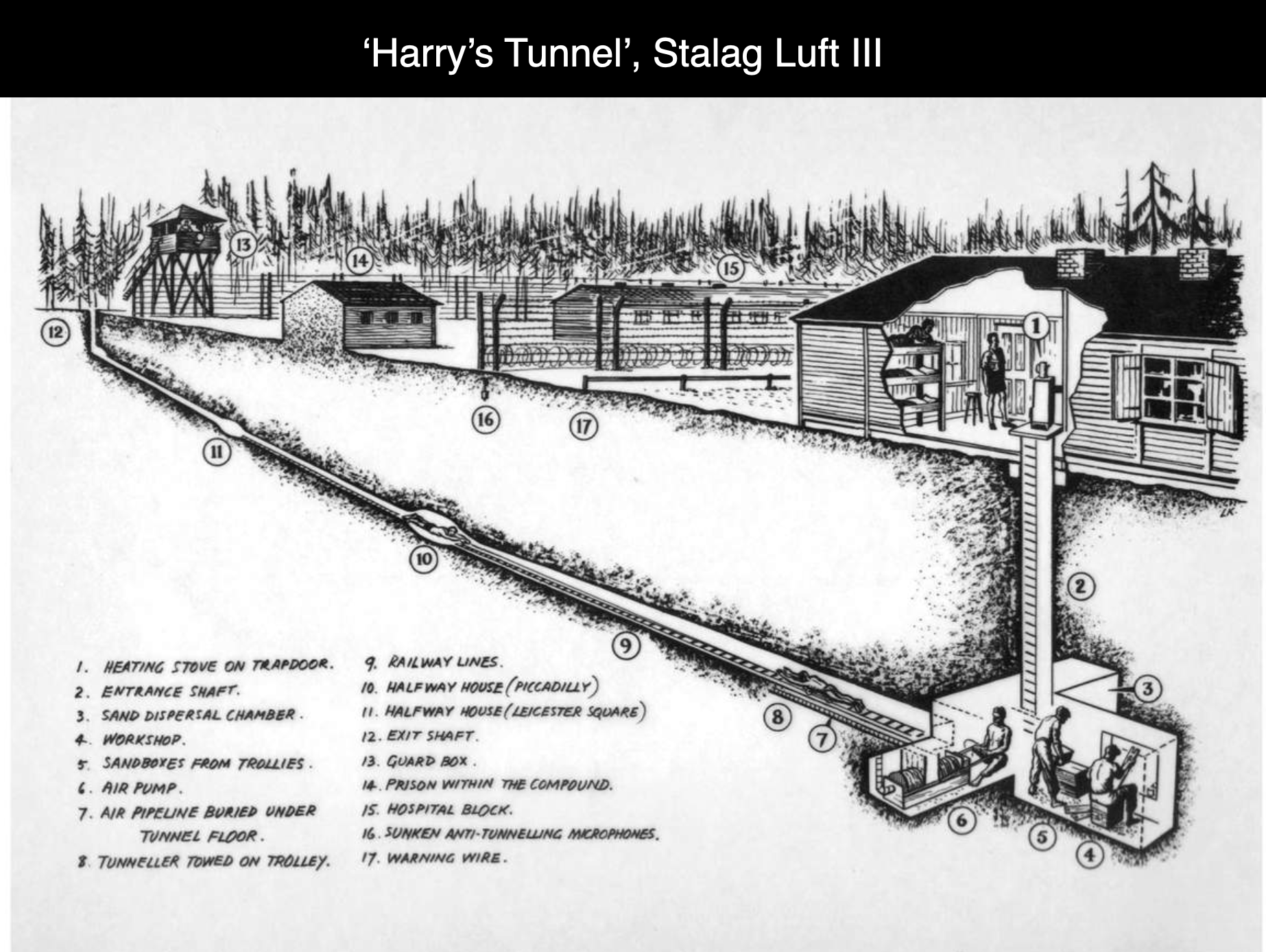The Great Escape is one of history’s most famous prison breaks. Seventy-six Allied airmen made an audacious bid for freedom from Stalag Luft III, a Nazi prisoner-of-war camp, during the Second World War.
The Nazis built this maximum-security camp 100 miles from Berlin, intending for it to be escape-proof. It was designed to house captured Allied aviators, some of whom had previously attempted to escape. Prisoner huts were raised off the ground to prevent tunnelling, and microphones were buried nine feet underground along the camp’s perimeter. The camp was even built on yellow sand to make tunnelling nearly impossible.
However, for a year, British, American, Canadian, and other Allied prisoners secretly tunnelled without detection. Under the rules of the Geneva Convention, servicemen caught trying to escape could expect ten days in solitary confinement.
The cunning plan was orchestrated by a Royal Air Force pilot named Roger Bushell. Over 600 prisoners worked together to build three tunnels, which they named Tom, Dick, and Harry. ‘Harry’ was dug 30 feet underground from Hut 104, with its entrance concealed beneath a heating stove. One hundred tons of sand were excavated and discreetly sprinkled in the gardens that the prisoners were allowed to tend.
To support the tunnels, 4,000 wooden bed boards were used to build ladders and reinforce walls. Seventeen hundred blankets were stuffed against the walls to muffle the sounds of digging, while 1,400 powdered milk cans, donated by the Red Cross, served as makeshift shovels. The resourceful prisoners even designed a bellows-style air pump system to maintain oxygen flow inside the tunnels. An elaborate warning system was devised, including subtle signals like turning a book cover or tying a shoelace to alert others of an approaching guard.
By bribing guards, the prisoners managed to forge identity cards. Two hundred men were selected to escape, most through a lottery system. However, the ‘Tom’ tunnel was discovered before completion, and ‘Dick’ was repurposed for storage. ‘Harry’ was finally completed in early 1944.
Seventy-six men successfully escaped, but only three survived—two Norwegians and a Dutchman. In violation of the Geneva Convention, Hitler personally ordered the execution of 50 recaptured escapees, including Bushell.
The incredible resourcefulness and bravery of these men was immortalised in the blockbuster film The Great Escape (1963), starring Steve McQueen, James Garner, Richard Attenborough, Charles Bronson, and James Coburn. The film’s most famous scene—Steve McQueen’s motorcycle jump—was, however, completely fictional.

